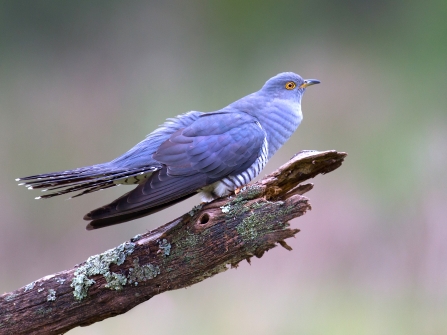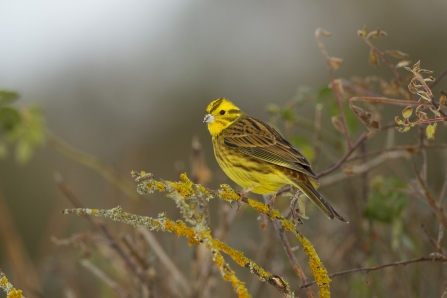Listen out for these ten beautiful birdsongs
Corn bunting by Chris Gomersall/2020VISION

Chiffchaff by Janet Packham - Janet Packham Photography
Found in woodland, scrub, parks and gardens alike, the chiffchaff’s song is the repeated call of its name: ‘chiff-chaff, chiff-chaff’. It’s one of the earliest migrant species to return from Africa, though some chiffchaffs now choose to overwinter here.
Cuckoo

You are truly honoured to catch the distinctive call of the cuckoo. This all-too-scarce summer visitor arrives in April, lays its eggs then flies back to Africa just a couple of months later in June or July. The young follow as soon as they’re able in autumn.
Swift

Swift by Stefan Johansson
Surely no bird is freer than the soaring, playful swift? The swift lives up to its name and its forked tail is unmistakable. Look and listen out for large groups wheeling – and screeching – overhead, particularly near older buildings such as churches (you'll have to wait till the end of April to hear this one - it's a summer migrant).
Skylark

Skylark by Margaret Holland
Its sublime, high-pitched song will lift you heavenward. Male skylarks can be spotted rising almost vertically and effortlessly hovering and singing from a great height. Their long, complicated, beautiful song-flights can last for up to an hour.
Yellowhammer

Yellowhammer by Mark Hamblin/2020VISION
Look for them perched on hedgerows or on the top of bushes as they sing their heartfelt song, which sounds a bit like ‘a little bit of bread and no cheese’. The female builds a cup-shaped nest from grass and moss, laying between two and six eggs.
Corn bunting

Corn bunting by Amy Lewis
There’s no mistaking the fast-paced, jangly call of a corn bunting. Male corn buntings are often seen perched on top of bushes singing loudly. One male may mate with up to 18 different females in a season, while the female incubates the eggs.
Blackbird

Blackbird by Sam Hockaday
The beautifully melodic blackbird is a true songster. One of our most familiar thrushes, it is common in gardens, parks and woodland. Blackbirds are especially fond of feeding on lawns and can be seen with their heads cocked to one side, listening for earthworms.
Rook

A rook's most distinguishing feature is its pale bill with a bare base. Photo by Gillian Day
Listen out for the loud, rasping chatter of a flock of rooks. Rooks are large crows that make big nests in the top of trees and gather in large ‘rookeries’. They often nest in villages and graveyards, but are also birds of farmland and grassland.
Mistle thrush

Mistle thrush by Amy Lewis
The mistle thrush boasts a crystal-clear, tuneful whistle. It is a common visitor to parks and gardens, woodland and scrub. The birds enjoy mistletoe berries and, once it has found a berry-laden tree, will guard it from would-be thieves.
Wood-pigeon

Wood-pigeon by Gillian Day
A wood-pigeon’s soft, rhythmic cooing is always soothing. Our largest and most common pigeon, the woodpigeon is a familiar bird of gardens, parks, woodland and farmland. Its husky ‘hoo-hroo’ call is a well-known sound of the country.


